There are choices for every letter of the alphabet when it comes to flowers. Nevertheless, we’re focusing on a specific letter L, today.
You may be wondering why L. The long-stemmed lilies and the delicate lavender blossoms are only two examples of the extremely beautiful flowers that begin with this letter.
These flowers are beautiful, yet there is more to them than meets the eye that merits investigation. We can develop a deeper understanding of the natural world and how it enriches our lives by learning about the various flowers that begin with the letter L.
Read on to learn about the wonder and importance of flowers that start with L whether you’re a flower fanatic, a nature lover, or neither.
Keep Reading:
- Flowers That Start With G
- Flowers That Start With H
- Flowers That Start With I
- Flowers That Start With J
- Flowers That Start With K
List Of Flowers That Start With L
1. Lacespine Pincushion Cactus
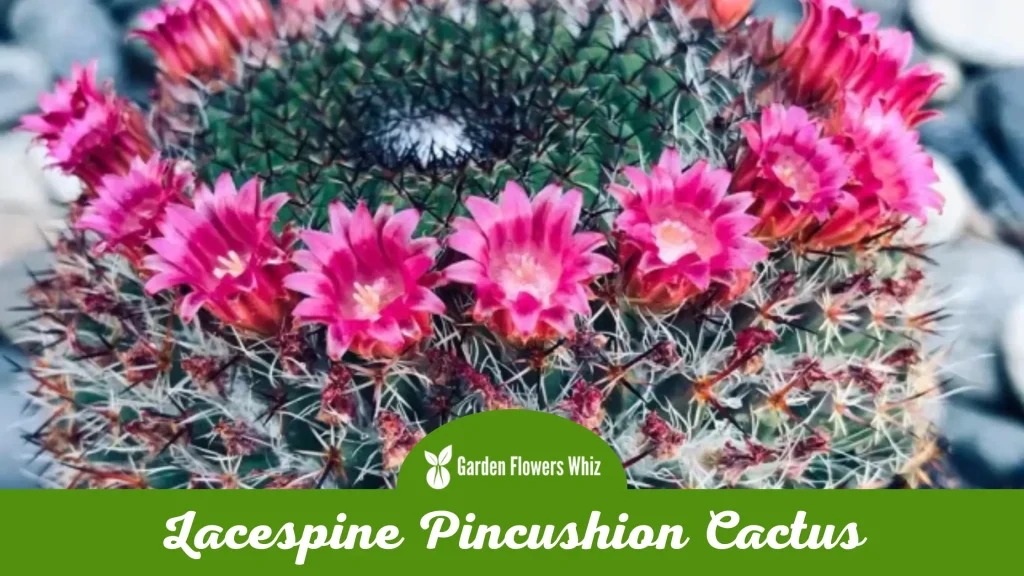
Mammillaria lasiacantha, often known as the Lacespine Pincushion Cactus, is a lovely cactus species that are indigenous to Mexico. As its name implies, this cactus has thin, delicate-appearing spines that are arranged in a lacy pattern, giving it a distinctive and lovely appearance.
The Lacespine Pincushion Cactus has a rounded shape and a greenish-gray tint and can reach heights and widths of up to 10 cm. The cactus produces stunning pink or white flowers that bloom on the top of the plant in the spring and summer.
Little, palatable fruits that are favored by nearby fauna follow these blossoms. This cactus is a great addition to any cactus collection and is comparatively simple to care for.
In addition to protection from frost during the winter, it needs well-draining soil and moderate watering during the growing season.
The Lacespine Pincushion Cactus is the perfect indoor plant or outdoor plant for shady settings because it enjoys bright but indirect sunshine.
The Lacespine Pincushion Cactus will bring a touch of unusual charm to any area with its delicate spines and gorgeous blossoms.
2. Love In A Mist
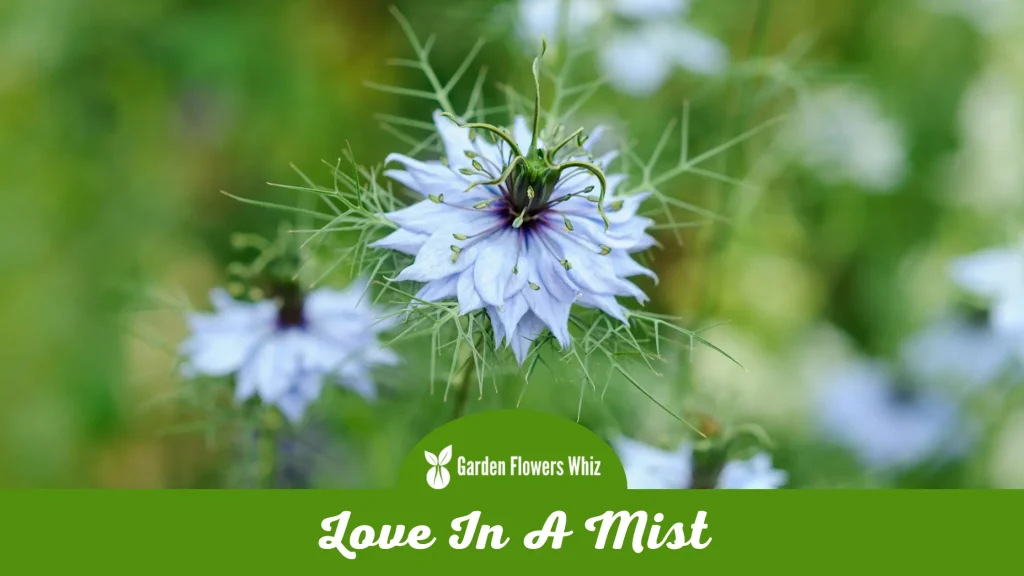
A lovely and delicate flowering plant native to Southern Europe, North Africa, and Southwest Asia is called Love in a Mist, also known as Nigella damascena.
The name Love In A Mist alludes to the plant’s distinctive look, in which a mist-like cloud of supple, fern-like foliage envelops the blossoms.
The flowers are stunning in themselves, with a distinctive, star-shaped blue or white bloom perched atop a skinny stalk. The plant normally blooms in the summer and reaches a height of 30 to 50 cm.
Love in a Mist is a well-liked selection for gardeners of all skill levels because it is a low-maintenance, simple-to-grow plant.
It is a wonderful choice for garden beds, borders, or pots because it prefers well-draining soil and full sun as opposed to partial shade. Love In A Mist is an ideal addition to xeriscapes and rock gardens because it is drought-tolerant and resilient to dry weather.
Love In A Mist is a fantastic option for adding interest and texture to any garden or outdoor space because of its distinctive appearance and simplicity of maintenance.
3. Leopard’s Bane

A beautiful perennial flower native to Europe and Asia known as leopard’s bane is also known by the scientific name Doronicum orientale. Bright yellow, daisy-like flowers that bloom from early spring to late summer are produced by the plant, which can reach a height of 60 cm.
The flowers have a striking appearance and are about 5 cm in diameter, with a dark brown or black core.
Any garden would benefit from the sturdy and simple-to-grow Leopard’s Bane plant. Full to partial light and moist, well-draining soil are preferred.
It is a great option for gardens in colder locations because it tolerates cooler temperatures and frost. Leopard’s Bane is a superb choice for gardens with significant deer populations because it is also deer-resistant.
Leopard’s Bane is a terrific option for bringing color and interest to any garden or landscape because of its cheery, colorful blossoms and simple maintenance needs.
4. Lavandin
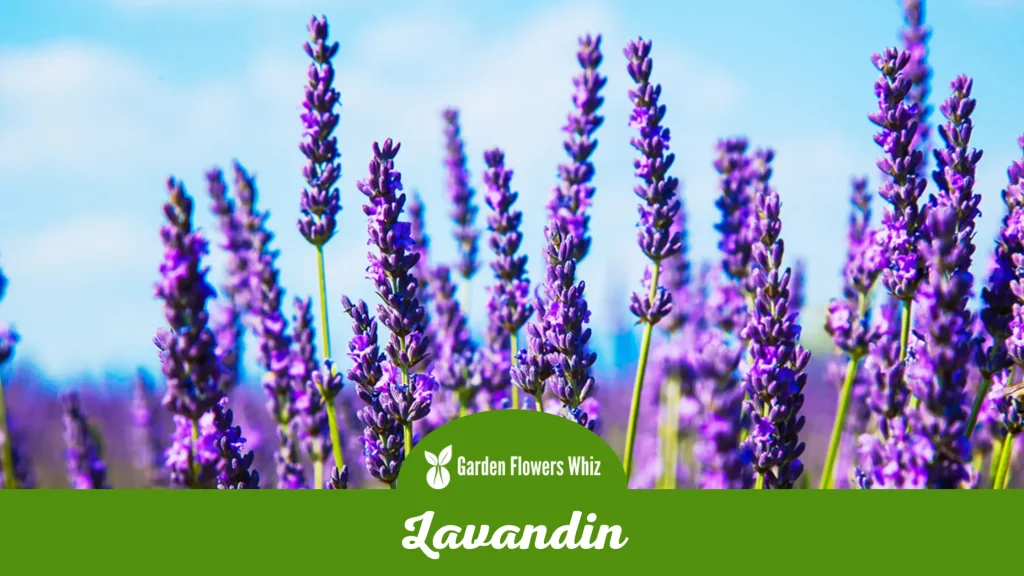
Lavandin, also called Lavandula x intermedia, is a hybrid plant created by crossing Spike Lavender (Lavandula angustifolia) and Lavender (Lavandula angustifolia) (Lavandula latifolia).
This plant is well-known for its magnificent purple blooms, which bloom in the summer and have a strong fragrance that is well-liked in perfumes and aromatherapy. The blossoms are incredibly fragrant and have a peaceful and soothing sensation.
A resilient and simple-to-grow plant like lavendin is a wonderful addition to any garden or landscape. It is the ideal plant for rock gardens, borders, and containers because it prefers well-drained soil and direct sunlight.
The plant adds texture and appeal to any garden as it grows up to 90 cm tall with woody stems and green or grey leaves.
Lavandin is a fantastic plant for gardening in dry or desert conditions because it is also very drought-tolerant. Lavandin is a popular plant for use in gardening, manufacturing essential oils, and creating herbal treatments due to its eye-catching blossoms and a pleasant aroma.
Everybody who comes into contact with lavendin will be delighted, whether it is grown as a garden plant or used for its therapeutic benefits.
5. Large Yellow Foxglove

The stunning herbaceous perennial plant known as the Large Yellow Foxglove is native to Central Europe and is also referred to by the scientific name Digitalis grandiflora.
Its tall, tubular yellow flower spikes that resemble the shape of a fox’s glove give rise to its common name. Bees, butterflies, and hummingbirds are drawn to the garden by the flowers’ late spring to early summer bloom.
The Large Yellow Foxglove is the ideal plant for the back of a border or as a garden focal point because it can reach heights of 1.2 meters and widths of 60 cm.
With its preference for wet, well-drained soil and medium to full light, the Large Yellow Foxglove is simple to cultivate and maintain. It has a wide range of soil tolerance and may thrive in both sandy and clayey soils.
The plant is a great option for gardens in colder locations because it is tolerant of chilly temperatures and can tolerate frost.
The Large Yellow Foxglove is a fantastic option for adding vertical interest and color to any landscape because of its spectacular blossoms and simple maintenance needs.
It is also quite resistant to deer, making it a fantastic choice for gardens where there is a lot of deer.
6. Large Speedwell

The magnificent perennial plant known as the Big Speedwell, or Veronica teucrium, is indigenous to Europe and Asia. This plant produces lovely spikes of tiny, tubular blooms in blue and purple hues in the summer.
The blooms are an excellent addition to any pollinator garden because they are a favorite of bees and butterflies. The Big Speedwell is the ideal plant for borders or as a ground cover because it may reach heights of 60 cm and widths of 30 cm.
The Big Speedwell requires little upkeep and is simple to grow and take care of. It can take some shade but does best in well-draining soil and full to partial light.
The plant can tolerate dry spells and is drought-tolerant, making it a fantastic choice for gardens in the desert or dry areas.
The Big Speedwell is an excellent option for gardens with heavy deer populations because it is also deer-resistant. The Big Speedwell is a fantastic option for adding color and interest to any landscape because of its lovely blossoms and simple maintenance needs.
With its lovely blossoms and low maintenance requirements, this plant is guaranteed to please, whether planted as a ground cover or in borders.
7. Large Fothergilla
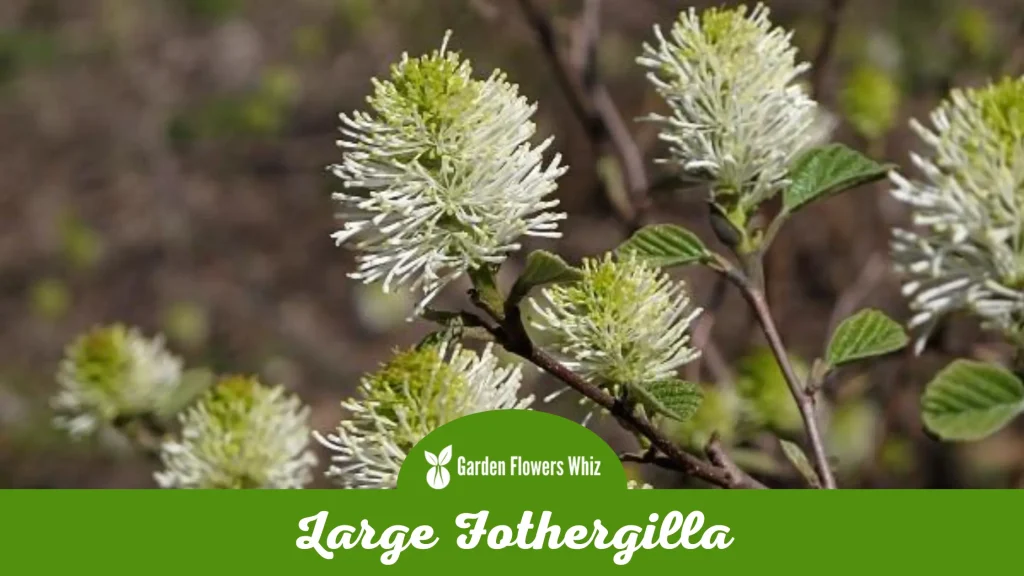
The southeastern United States is home to the Big Fothergilla, also referred to as Fothergilla major, a deciduous shrub. Beautiful, fragrant bottlebrush-like blooms, which bloom in the early spring before the leaves grow, are what this plant is famous for.
The flowers are a creamy white hue and have a strong fragrance that is well-liked by gardeners since it is sweet and reminiscent of honey.
The plant is an excellent choice for borders, hedges, and specimen planting in bigger gardens because it may reach heights of 3 meters and a width of 2 meters.
The Big Fothergilla is a low-maintenance plant that is simple to grow and take care of. In addition to medium to full light, it prefers wet, well-drained soil.
The plant can endure a variety of soil types as well as both wet and dry circumstances. Moreover, the Big Fothergilla is quite disease-resistant and doesn’t need much pruning or other upkeep.
The Big Fothergilla is a wonderful option for adding interest and fragrance to any garden because of its lovely blossoms and simplicity of care.
This plant’s gorgeous blossoms and low maintenance requirements make it ideal for use as a specimen plant, hedge, or border.
8. Lance Leaf Blanket Flower
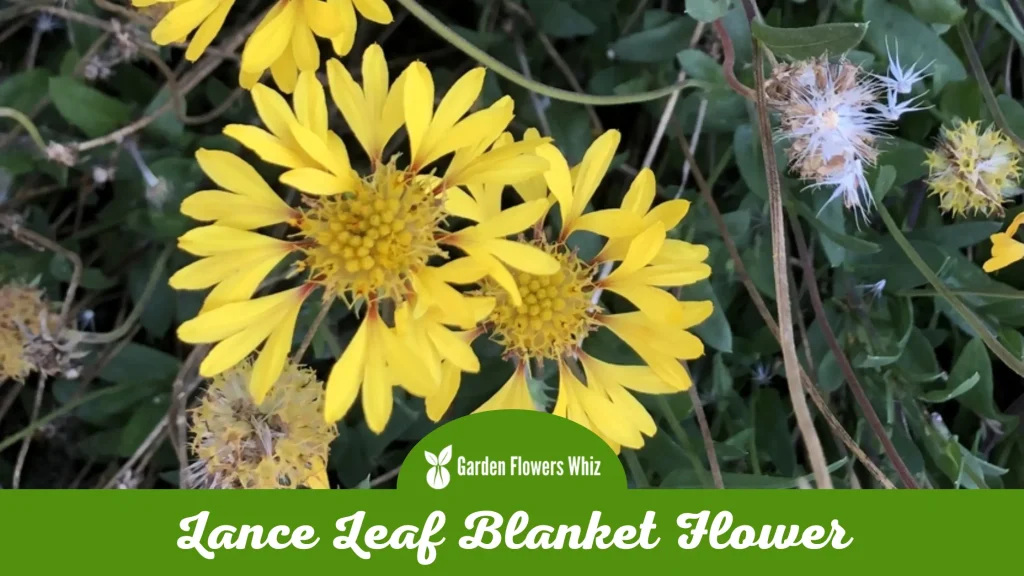
The perennial plant known as Gaillardia aristata, or the Lance Leaf Blanket Flower, is indigenous to North America. The sunflower family includes this lovely flower, which grows in a range of environments, including prairies, meadows, and open forests.
It is renowned for its vivid and stunning color, with petals that radiate from a dark central disc in yellow, red, and orange.
The Lance Leaf Blanket Flower can reach a height of 2 feet and blooms from early summer to late fall. It is a resilient plant that grows well in both full sun and partial shade and needs little maintenance.
In addition to being incredibly beautiful, it serves as an important source of nectar for pollinators like butterflies. A popular garden plant that brings a splash of color and charm to any landscape is the Lance Leaf Blanket Flower.
9. Lupin
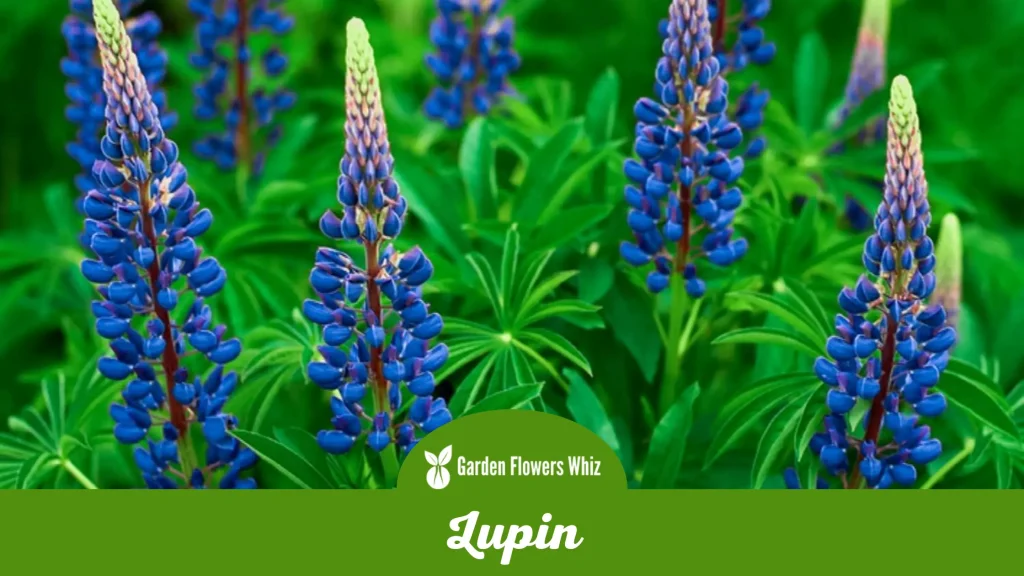
A genus of blooming plants that is a member of the legume family is referred to as lupin or lupines. Although they are originally from North and South America, these lovely and vibrant flowers are now widespread around the world.
They are well recognized for their eye-catching flower spikes, which come in a variety of hues, including pink, purple, blue, white, and yellow. Because of their distinctive and lovely flower spikes, which can reach a height of 4 feet, lupins are common garden plants.
They are a well-liked choice for both inexperienced and seasoned gardeners due to their popularity and ease of growth and maintenance. Lupin prefers full light and well-drained soil; spring is the best time to plant them.
Lupins are prized for their ability to fix nitrogen in the soil in addition to their decorative appeal. They are, therefore, a great addition to gardens and landscapes since they can raise the soil’s fertility.
Also utilized in cooking, lupin seeds are a good source of protein and fiber. Lupins are lovely, multipurpose flowers that can give color and brightness to any garden or environment.
10. Lungwort

A perennial flowering plant native to western Asia and Europe is referred to as lungwort, also known as pulmonaria. This plant is prized for its lovely foliage and bell-shaped springtime flowers.
The oval, green leaves of the lungwort plant might eventually sprout white dots or speckles, giving the plant an intriguing and distinctive appearance.
Due to its preference for moist, well-drained soil and moderate shade, lungwort is a well-liked plant for woodland or shady gardens. The plant can reach a height of 12 inches and has clusters of flowers with hues ranging from pink to blue to purple.
Bees and other pollinators rely on the flowers of lungwort as a significant supply of early-season nectar. It has been used to treat coughs, bronchitis, and other respiratory disorders because it includes substances thought to have anti-inflammatory and antibacterial qualities.
11. Lunaria
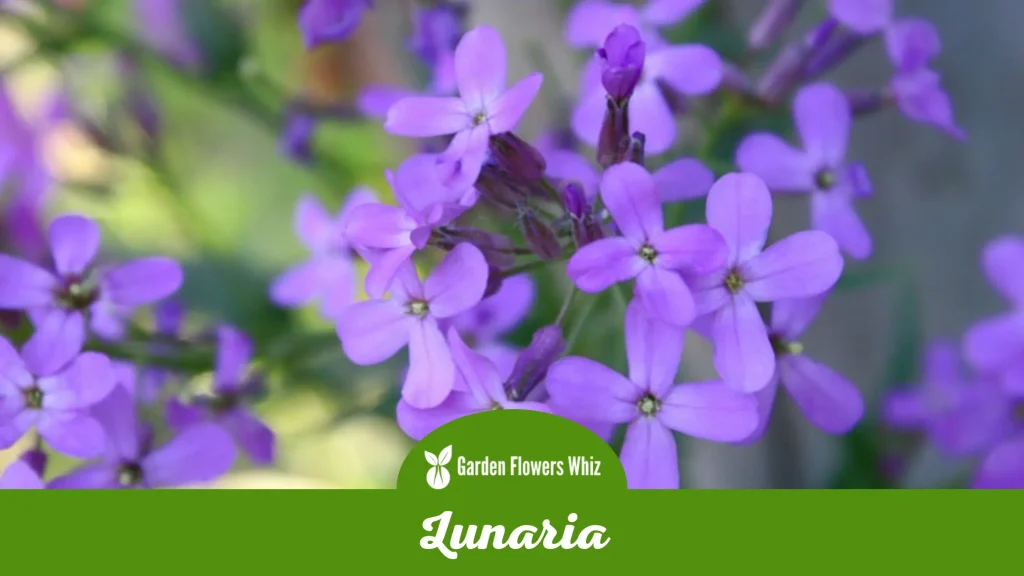
A biennial blooming plant with the common names Honesty or Silver Dollar plant, Lunaria is native to western Asia and Europe. It is well renowned for having unusual and lovely seed pods that resemble silver coins and are translucent and papery.
The plant can reach a height of three feet and blooms in the spring with clusters of fragrant white, purple, or pink flowers. As it gives a distinctive and striking feature to flower beds and borders, lunaria is a common ornamental plant in gardens and landscapes.
The plant is generally low-maintenance and requires well-drained soil and full sun rather than partial shade. Lunaria seed pods are prized for both their aesthetic appeal and usefulness.
They can be used as a natural substitute for metallic coins, dried flower arrangements, wreaths, and more. Gardeners and environment lovers alike love it for its distinctive seed pods and fragrant blossoms.
12. Love Lies Bleeding
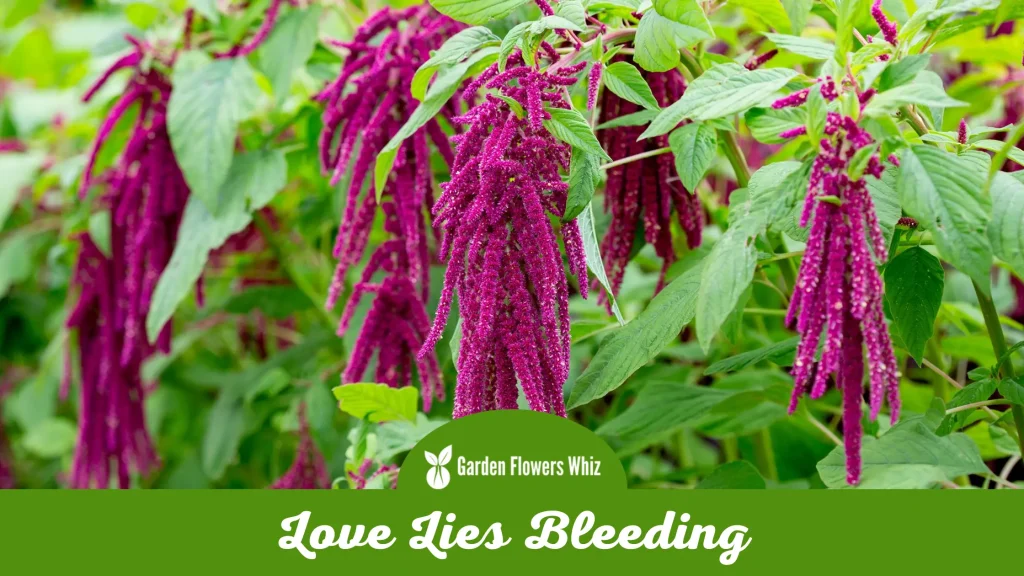
The gorgeous and uncommon annual plant Love Lies Bleeding, also known as Amaranthus caudatus, is indigenous to South America. It is popular for its striking, drooping clusters of red, burgundy, or purple flowers that resemble cascading tassels.
Love Lies Bleeding loves full sun and well-drained soil and can reach heights of up to 4 feet. It is a resilient and simple-to-grow plant that thrives in a variety of garden environments.
Love Lies Bleeding has been utilized in food and medicine in addition to ornamental purposes. The plant’s edible leaves and stems can be prepared similarly to spinach, and the seeds can be crushed into flour and used as baked products.
Its distinctive and striking blossoms are certain to draw attention and make a bold statement in any situation.
13. Love in the Mist
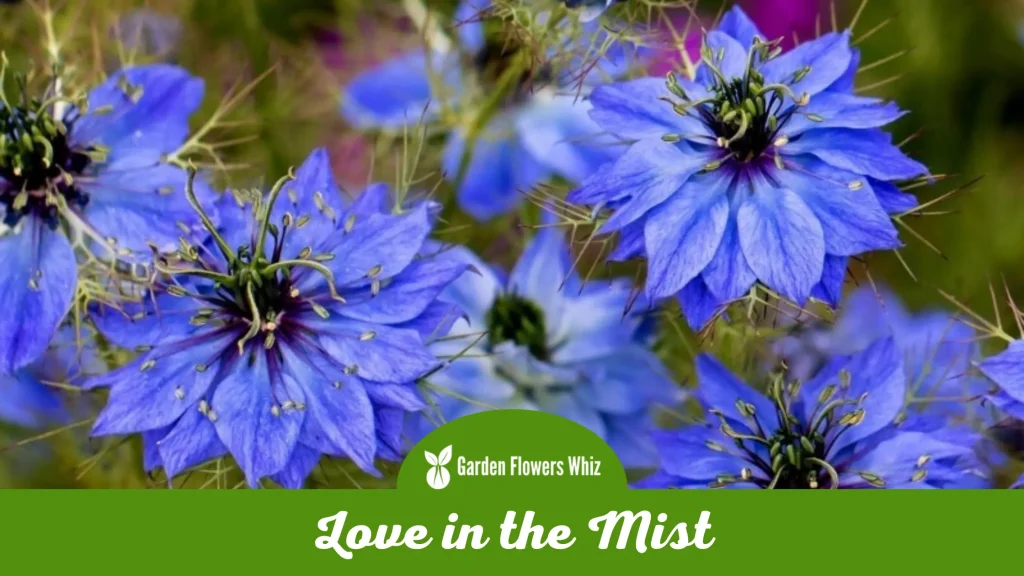
The delicate and endearing annual flowering plant Love in the Mist, often called Nigella damascena, is indigenous to southern Europe and northern Africa.
The plant is well recognized for its delicate, intricate flowers that come in blue, pink, white, and purple hues, as well as its finely divided, fern-like foliage.
The Love in the Mist plant may grow up to 2 feet tall and enjoys full sun to partial shade, well-drained soil, and both. It is a robust, simple-to-grow plant that adapts well to different garden settings.
Early to midsummer sees the blooming of Love in the Mist’s flowers, followed by distinctive and lovely seed pods frequently used in dried flower arrangements.
The plant’s seeds have also been used in herbal drinks and as a spice in cooking. Overall, Love in the Mist is a delicate and endearing plant that may enhance any garden or landscape with both aesthetic appeal and usefulness.
Gardeners and nature lovers will be enthralled and delighted by its exquisite and distinctive blossoms.
14. Lotus

Nelumbo nucifera, popularly known as the lotus, is a stunning and revered flowering plant that is indigenous to Asia and Australia. It has great cultural and spiritual importance in many prehistoric societies, making it one of the world’s most iconic and emblematic plants.
The Lotus plant is a shallow-water aquatic plant with enormous, floating leaves and beautiful, fragrant flowers that are available in a variety of colors, including white, pink, and red.
The plant stands for cleanliness, rebirth, and enlightenment and is well recognized for its capacity to revive and blossom in dirty and murky water.
Ultimately, the lotus plant is a well-known and iconic plant that is deeply significant in terms of culture and spirituality worldwide. It is a favorite of both gardeners and nature lovers because of its magnificent blossoms and potent meaning.
15. Loosestrife

Lysimachia vulgaris, popularly known as loosestrife, is a tall and eye-catching perennial plant that is indigenous to Europe, Asia, and North America.
Lance-shaped leaves that develop in whorls down the stem and the plant’s beautiful, bright yellow flowers that bloom in the middle to end of the summer are two of the plant’s most distinctive features.
The loosestrife plant can reach a height of 6 feet and thrives in moist soil that is either partially shaded or in direct sunlight. It is a resilient and simple-to-grow plant that thrives in a variety of garden environments.
Loosestrife is a plant that may be utilized to make stunning and colorful garden displays. Pollinators like bees and butterflies find their blossoms to be attractive.
It is crucial to keep in mind that some species of loosestrife are invasive and might disrupt local ecosystems; thus, care should be given when planting non-invasive species in the right places.
All things considered, loosestrife is a stunning and eye-catching plant that may enhance the beauty and value of any garden or landscape.
16. Lobelia
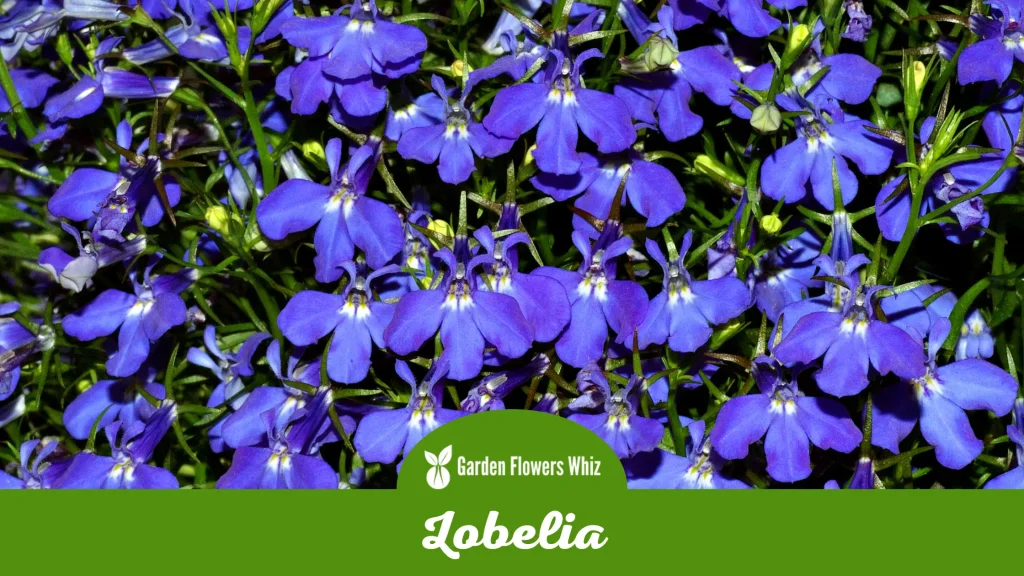
A lovely and delicate annual flowering plant native to southern Africa, lobelia is sometimes known as lobelia erinus. The plant is well recognized for its gorgeous, dark green foliage and its petite, bell-shaped blooms that come in blue, pink, and purple hues.
The lobelia plant can reach a height of 12 inches and enjoys full sun to partial shade as well-drained soil. It is a robust, simple-to-grow plant that adapts well to different garden settings.
Pollinators like bees and butterflies are attracted to the Lobelia flowers, which bloom in the middle to late summer. However, it is crucial to keep in mind that some Lobelia species are toxic and can be harmful if consumed.
In general, Lobelia is a pleasant and alluring plant that can enhance the aesthetics and usefulness of any garden or landscape.
17. Living Rock Cactus
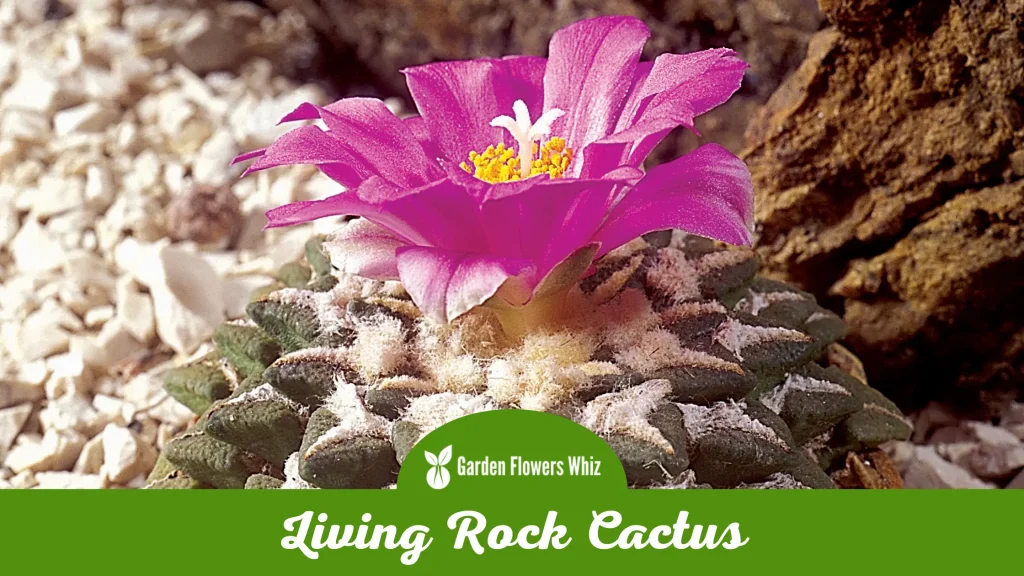
Ariocarpus fissuratus, a small and peculiar cactus that is endemic to Texas and northern Mexico, is also known as the living rock cactus. The plant is renowned for its distinctive, compact shape and capacity to endure the harsh desert environment.
The Living Rock Cactus thrives in rocky and sandy soil and is drought-resistant for extended periods of time. Its surface is covered in a distinctive and complex pattern of cracks that aid in both moisture retention and sun protection.
Due to its small stature, the plant is a favorite for rock gardens and tiny containers. Its small, white, or pink flowers bloom in late spring or early summer.
Remembering that the plant is endangered in its natural habitat is crucial, so caution should be exercised to prevent overharvesting or to overuse it.
Overall, the Living Rock Cactus is an unusual and fascinating plant that can enhance any rock or desert garden with both beauty and value.
18. Little Nipple Cactus
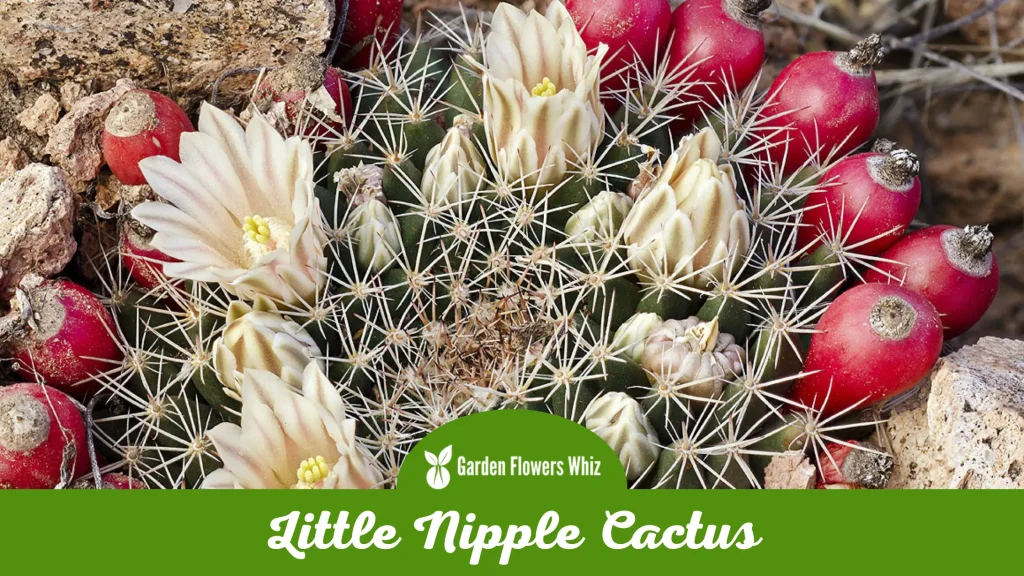
Mammillaria microcarpa, often known as the Little Nipple Cactus, is a little and endearing cactus that is indigenous to Mexico. The plant is renowned for its small stature and eye-catching pink or red flowers that open in late spring or early summer.
The Little Nipple Cactus can withstand extended droughts and thrives in rocky and sandy soil. It has a recognizable cylindrical shape and produces a group of short, spine-covered stems that are neatly organized.
Pollinators like bees and butterflies find the plant’s tiny, delicate blossoms to be appealing.
In its natural habitat, the plant is threatened with extinction; hence caution should be exercised to prevent overharvesting or overusing it.
Overall, the Little Nipple Cactus is a charming and eye-catching plant that can enhance any rock or desert garden’s attractiveness and worth.
19. Lisianthus

Native to North and South America, lisianthus, also known as Eustoma grandiflorum, is a stunning and sophisticated flowering plant.
The plant is well recognized for its long, slender stems and delicate, trumpet-shaped flowers, which come in white, pink, lavender, and blue colors.
The lisianthus plant can grow up to 2-3 feet tall and enjoys full sun to partial shade, well-drained soil, and both. It is a robust, simple-to-grow plant that adapts well to different garden settings.
Lisianthus flowers bloom in the middle to late summer and draw pollinators like bees and butterflies. Because of its appealing look and long-lasting blossoms, lisianthus is a preferred choice for use in cut flower arrangements in addition to its decorative value.
The plant is frequently used as a symbol of love, appreciation, and thanks at weddings and other special occasions. Overall, Lisianthus is a beautiful and adaptable plant that may enhance the aesthetics and usefulness of any garden or landscape.
20. Lindheimers Beeblossom
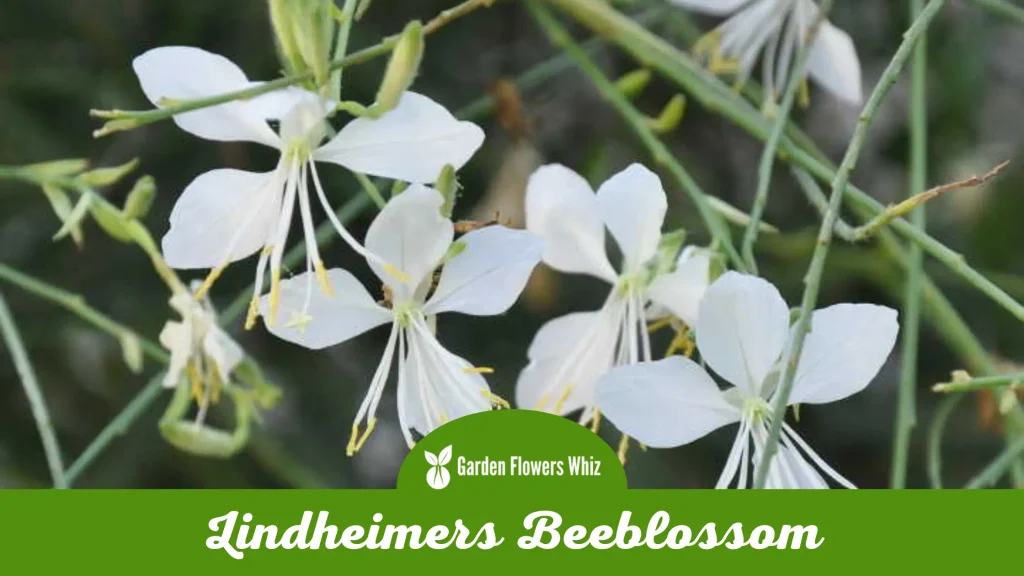
Gaura lindheimeri, often known as Lindheimer’s Beeblossom, is a stunning and graceful flowering plant that is indigenous to Mexico and the southern United States.
The plant is well-known for its long, slender stems and its delicate, four-petaled white or pink blooms that bloom in late spring or early summer.
The Lindheimer’s Beeblossom plant prefers well-drained soil, full sun, or light shade and can reach heights of up to 3–4 feet. It is a robust, simple-to-grow plant that adapts well to different garden settings.
Bees, butterflies, and hummingbirds are among the pollinators attracted to the blossoms of Lindheimer’s Beeblossom. Lindheimer’s Beeblossom is a well-liked option for use in naturalized and native plant gardens in addition to its decorative appeal.
The plant’s lengthy blooming season and resistance to drought make it a good choice for xeriscaping and other water-conserving gardening techniques.
21. Linaria

Around 150 different species of flowering plants belong to the genus Linaria, most indigenous to Europe and Asia. The plant is well recognized for its small, delicate flowers, which resemble snapdragons and are available in a variety of hues, including pink, purple, blue, yellow, and white.
Annual or perennial herbs, linaria plants can reach heights of three feet. They are typically simple to cultivate and maintain and prefer well-drained soil, full sun, as opposed to partial shade.
Bees, butterflies, and hummingbirds are among the pollinators drawn to Linaria’s blossoms. A number of the plant’s chemical constituents have been found to have antioxidant and anti-inflammatory capabilities.
22. Lily of the Valley
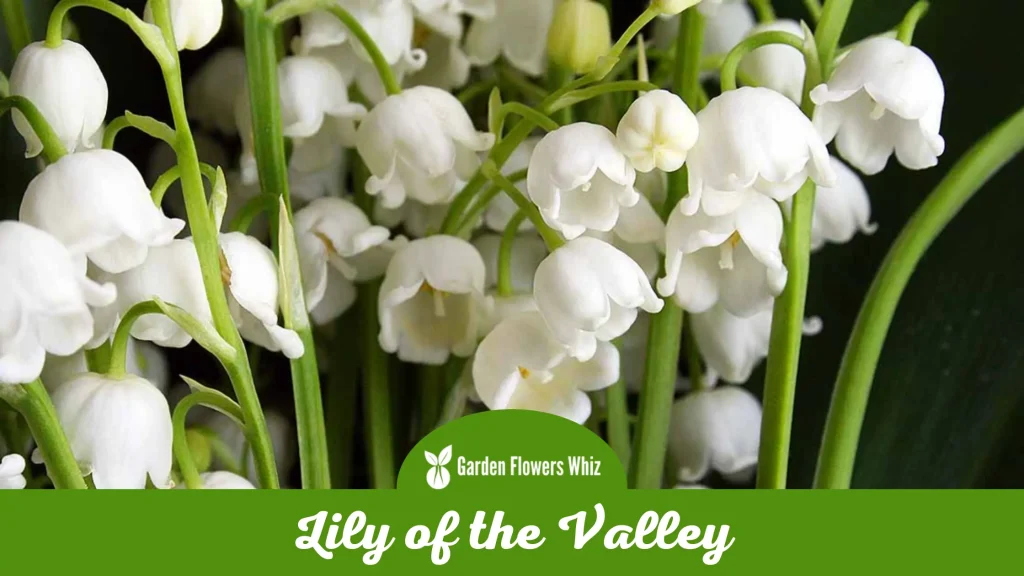
The beautiful and sweet-smelling flowering plant known as lily of the valley, or Convallaria majalis, is indigenous to temperate areas of the Northern Hemisphere.
The plant is well-known for its brilliant green, lance-shaped leaves, and delicate, bell-shaped flowers that appear in white and pink colors.
The average height of the lily of the valley plants, which are low-growing, is 6 to 8 inches. They do well in forest gardens and other shaded settings because they like wet, well-drained soil and partial to full shade.
Pollinators like bees and butterflies are drawn to the Lily of the Valley’s flowers throughout its late spring to early summer blooming period.
Nonetheless, care should be used when handling the plant because it is poisonous if consumed. Overall, Lily of the Valley is a lovely and endearing plant that can enhance any garden or landscape with both beauty and smell.
Gardeners and flower aficionados favor it because of the delicate blossoms and simplicity of care.
23. Lily
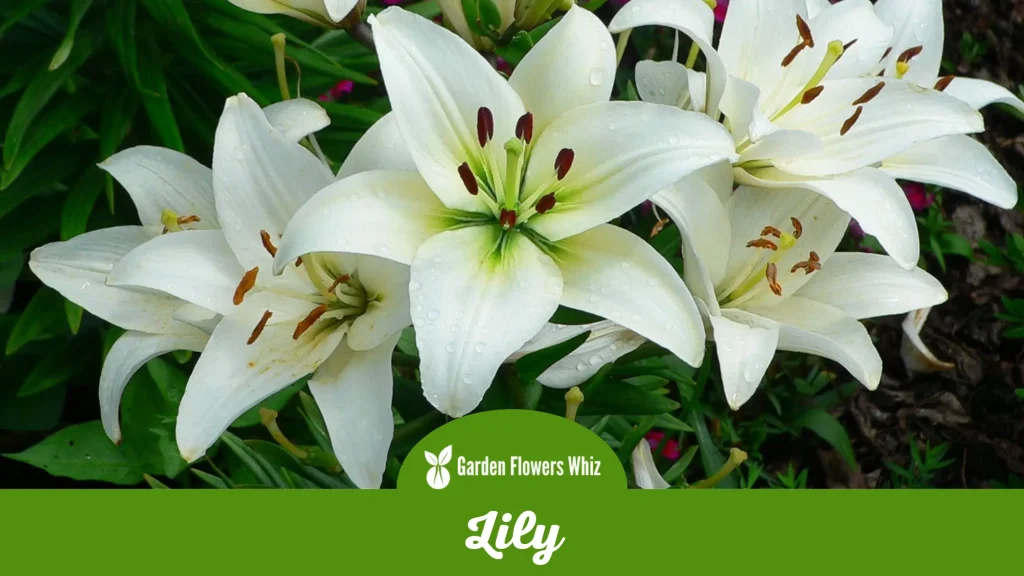
The genus Lilium contains a group of blooming plants known as lilies, indigenous to the Northern Hemisphere’s temperate areas.
Large, spectacular flowers with a variety of colors and patterns, including white, pink, red, yellow, and orange, are the plant’s most distinctive feature.
Lilies are perennial plants that can reach heights of up to 6 feet. They favor well-drained soil, full sun, or light shade. They adapt well to a variety of garden situations and are simple to grow and manage.
Lily blossoms are a favorite for use in cut flower bouquets and are enticing to pollinators like bees and butterflies.
Care should be given when growing lilies in locations where pets are present because some types are harmful to cats and dogs.
24. Lilac
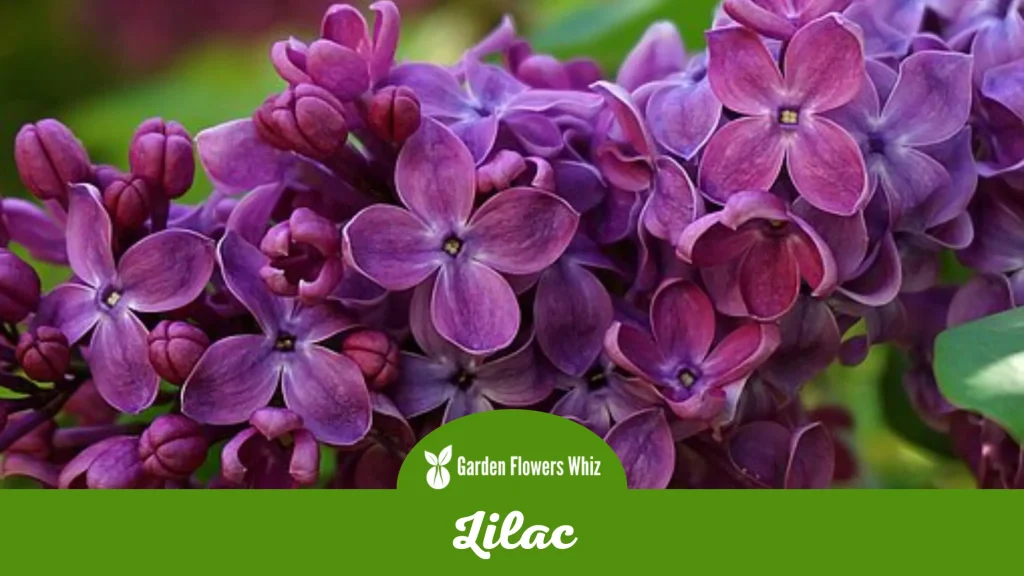
Native to Europe and Asia, lilacs are a genus of flowering plants in the olive family. They are well recognized for their fragrant scent and their showy, delicate flowers, which come in white, pink, and purple hues.
Lilacs are deciduous shrubs that can reach a height of 20 feet. They prefer well-drained soil, full sun to moderate shade, and both. They adapt well to a variety of garden situations and are simple to grow and manage.
Lilac blossoms are a favorite for use in cut flower bouquets and are enticing to pollinators like bees and butterflies.
The plant has also been used in aromatherapy for a very long time and is thought to provide relaxing effects on both the body and mind.
25. Licorice Root
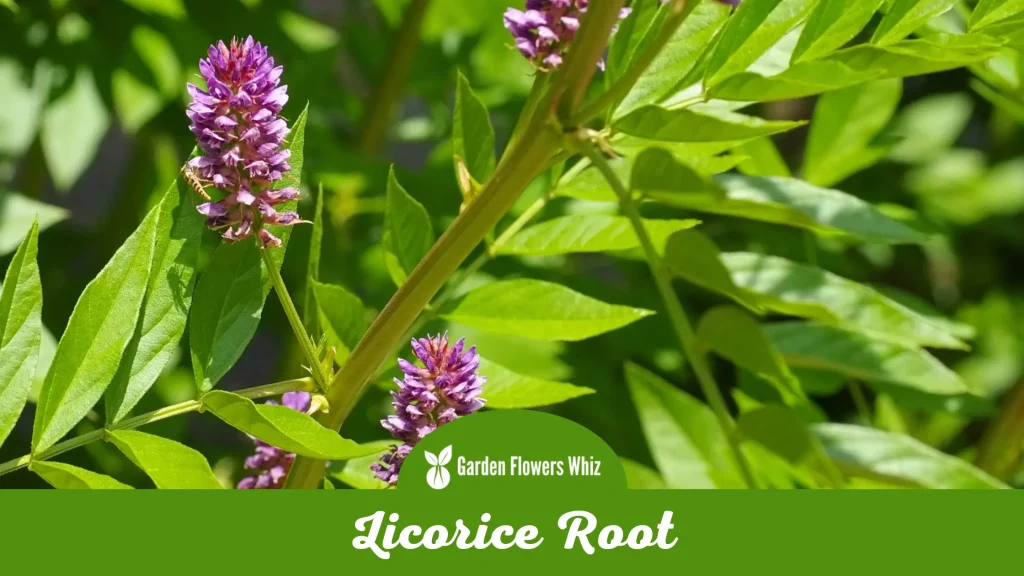
The plant licorice root commonly referred to as a sweet root, is indigenous to Europe and Asia. The plant is well renowned for its distinctive and sweet flavor, which is utilized in both culinary and therapeutic contexts.
Since ancient times, licorice root has been used in traditional medicine to cure a wide range of illnesses, such as coughs, sore throats, and digestive problems.
The root is a common ingredient in natural medicines because it includes substances with anti-inflammatory, antiviral, and antibacterial effects.
Licorice root has a number of culinary and medical purposes, in addition to being used to make licorice candy and root beer.
The plant is also frequently used in traditional Chinese and Indian medicine, as well as in some tobacco products as a flavor.
26. Licorice Plant
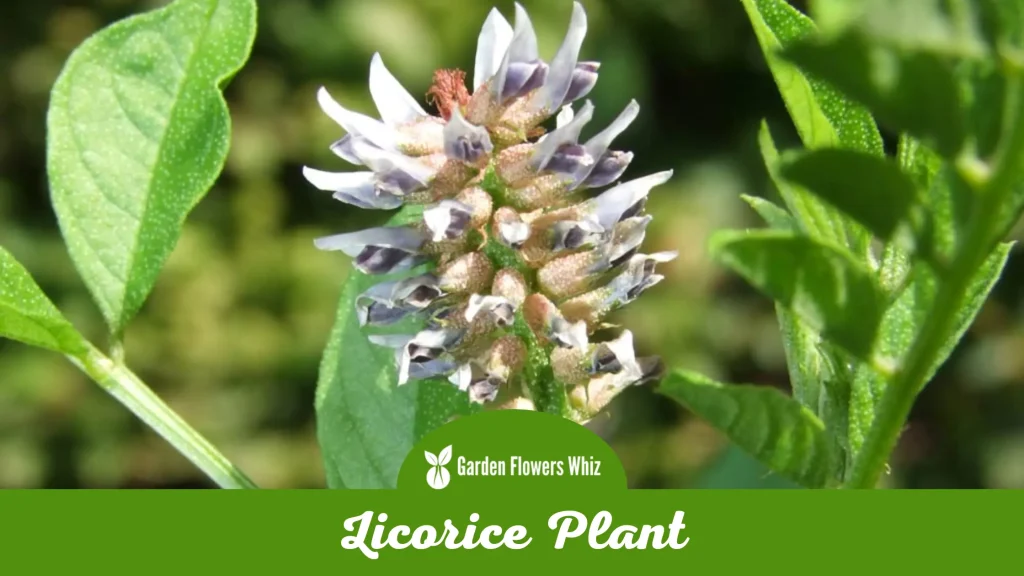
A perennial herb with origins in Europe and Asia, the licorice plant is sometimes referred to as sweet woodruff or Galium odoratum. The plant is renowned for its sweet, unique aroma that smells like vanilla and almonds.
Licorice plants are frequently grown and employed as groundcover or edging plants in gardens. The plant is adaptable to a wide range of growing circumstances and is low-growing, only growing to heights of 6 to 12 inches. It favors well-drained soil, some shade, and full sun.
27. Leucadendron

South Africa is home to the flowering plant genus Leucadendron, usually referred to as cone bush or silver tree. The flower, which can be bright pink to deep crimson depending on the type, is the plant’s most prominent and beautiful feature.
Leucadendron is frequently cultivated in gardens and is esteemed for its beauty and toughness. The plant is adapted to a wide range of growth conditions, but it favors well-drained soil and a sunny site.
Leucadendron serves a range of functional purposes in addition to being attractive. The plant is a common source of cut flowers and a preferred component in floral arrangements.
28. Leopard Plant
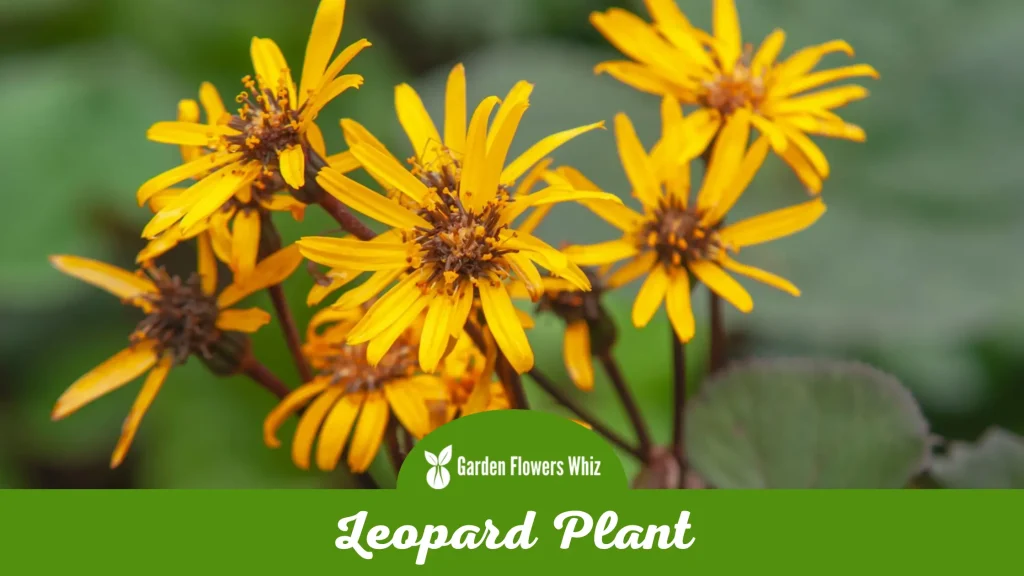
Eastern Asia is the home of the leopard plant, also known as ligularia dentata, a perennial flowering plant. It is an attractive plant that is widely regarded for its beautiful, vivid yellow flowers and huge, robust foliage.
Hardy plants like partial shade and moist soil; however, leopard plants may also withstand full sun. It is a plant that requires little upkeep and is a wonderful addition to a garden or landscape.
The plant, which is frequently used as a border or in a mixed planting, can reach heights of 3–4 feet and a width of 2–3 feet. The plant contains a number of advantageous substances, such as flavonoids and tannins, with antioxidant and anti-inflammatory activities.
29. Lemon Thyme
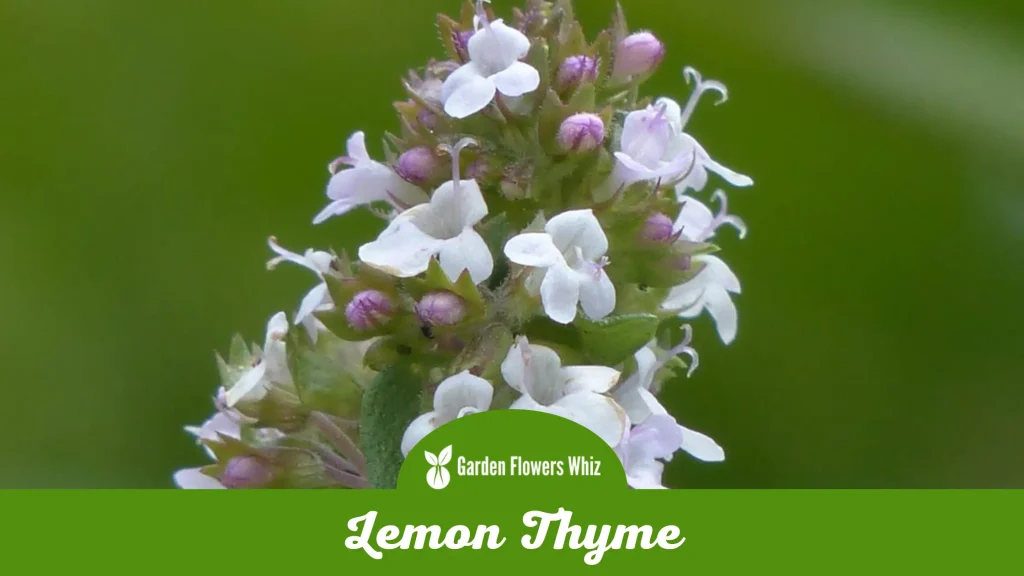
A member of the mint family, lemon thyme is a fragrant, low-growing herb. It is a common herb used in cooking and is highly regarded for its lemony flavor and scent.
Hardy Lemon Thyme plants can be cultivated in a garden or in containers. Although it can tolerate some shade, lemon thyme loves well-drained soil and full light.
The plant can reach heights of 12 inches and widths of 18 inches. It bears tiny, delicate flowers in pink, lavender, and white hues.
30. Lemon Balm
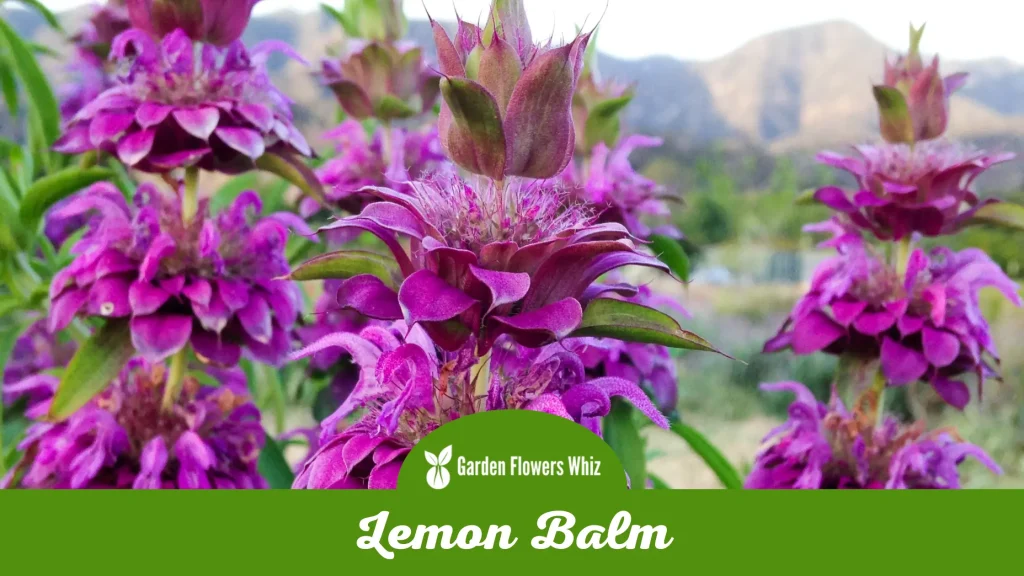
The mint family includes the aromatic and simple-to-grow herb known as lemon balm. Although it originates originally from Europe, it is currently grown everywhere.
The herb is valued for its lemon-scented leaves, which are frequently used in cooking, drinks, and essential oils. Although it can take full sun, lemon balm likes well-drained soil and partial shade.
It has a maximum height and width of 2-3 feet and blooms in the summer with tiny white or pink flowers.
31. Lechenaultia

Australian native flowering plants in the Lechenaultia genus are commonly grown for their lovely and colorful blossoms.
Lechenaultia flowers are mainly blue or purple, while some species also produce pink, white, and red flowers. The leaves of the plant are typically tiny, thin, and hairy or slightly abrasive to the touch.
The Lechenaultia plant’s capacity to flourish under challenging conditions is one of its most distinguishing characteristics. Many Lechenaultia species can thrive in environments with little rainfall because they are adapted to dry or sandy soils.
Moreover, they can tolerate hot temperatures and harsh sunlight. Lechenaultia plants are well-liked by gardeners and flower lovers because they are simple to grow and require little upkeep.
32. Lavender
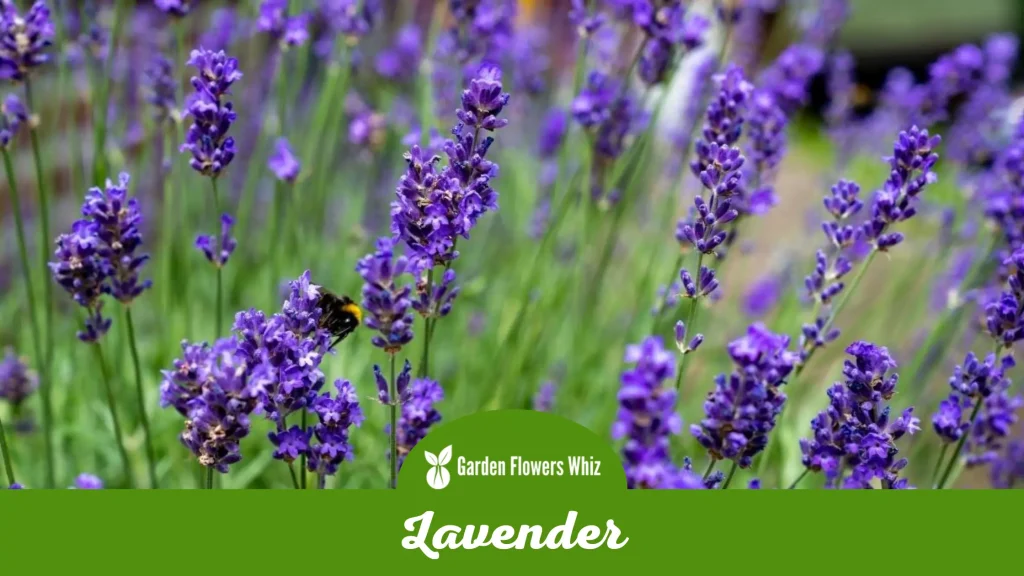
Although it comes originally from the Mediterranean region, lavender is now widely planted throughout the world. It is a well-liked and incredibly adaptable flowering plant.
Lavender has been a favorite among gardeners, aromatherapists, and herbalists alike due to its distinctive scent and gorgeous purple hue.
Lavender essential oils, which are frequently found in perfumes, soaps, and other smells, are produced from the plant’s blooms.
These oils are commonly used in aromatherapy to treat stress, anxiety, and sleeplessness because of their calming and sedative qualities.
Lavender is prized for its aroma, healing properties, and decorative appeal. This plant is a well-liked option for gardens, borders, and containers due to its exquisite purple flowers and silvery-green foliage.
Pollinators love lavender; its blossoms are known to draw bees, butterflies, and other helpful insects. Lavender continues to be a well-liked and incredibly adaptable plant, whether it be used in gardens, as a fragrance, or in herbal medicines.
33. Lavatera
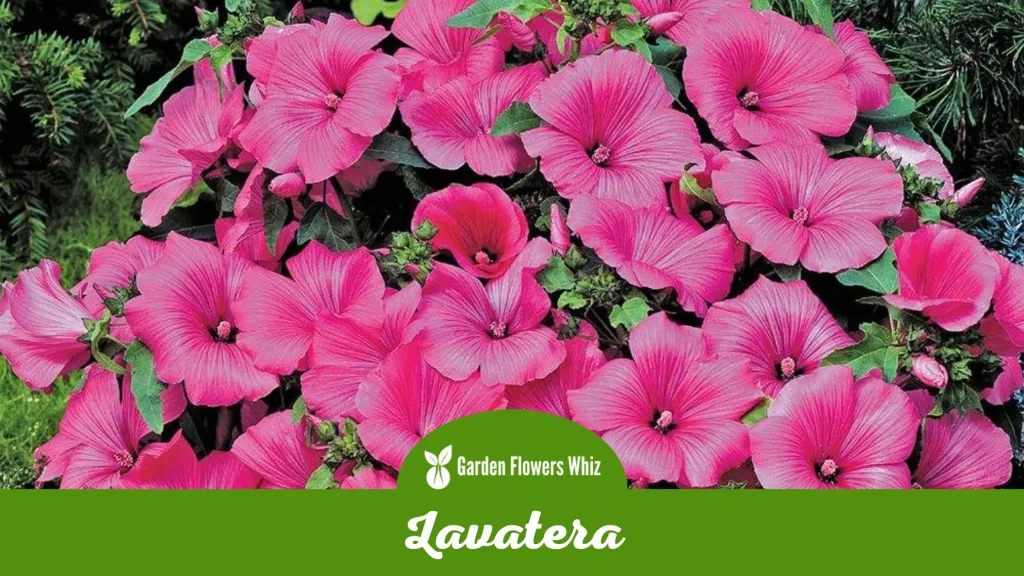
Lavatera, sometimes referred to as mallow, is a genus of flowering plants in the Malvaceae family. Native to the Mediterranean, the Lavatera plant is well-known for its colorful, saucer-shaped flowers in colors of pink, white, and purple.
Lavatera plants are primarily cultivated for their decorative value since people adore their huge, colorful, and long-lasting blooms.
They are frequently used as potted plants, borders, and gardens since they are known to draw bees and other pollinators. It is a favorite among both gardeners and herbalists due to its big, spectacular blooms and therapeutic properties.
34. Larkspur
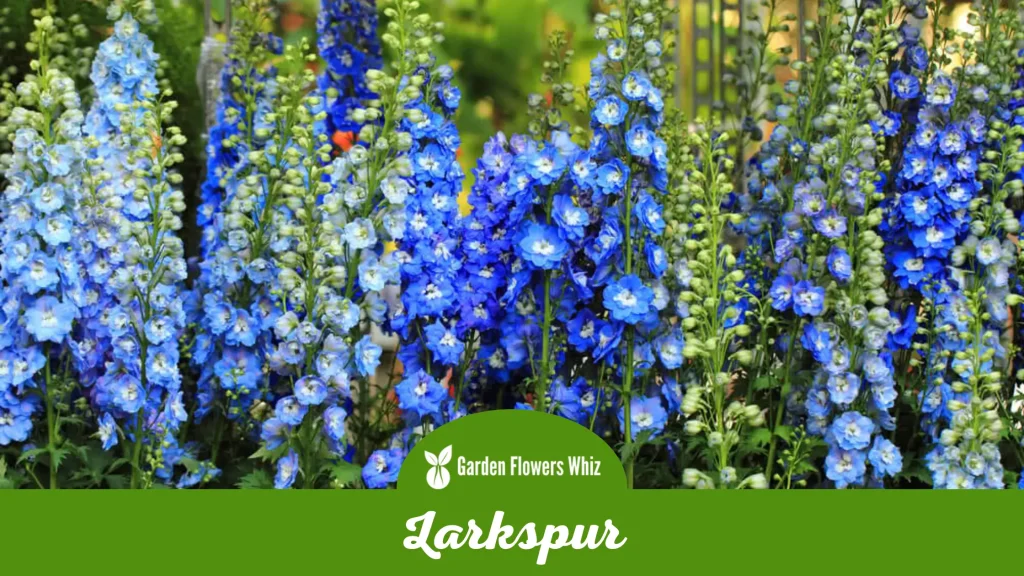
Larkspur is a genus of flowering plants in the Ranunculaceae family, which also includes buttercups. The northern hemisphere’s native larkspur is distinguished by its tall, spectacular spikes of summer-blooming blue, pink, white, and purple flowers.
Gardeners and florists love larkspur bushes for their gorgeous, multicolored blossoms. Its tall spikes make them a popular choice for adding height and drama to floral displays, and they are frequently used in cut flower arrangements.
Because of its tasty nectar, larkspur is also a favorite of pollinators like bees and butterflies.
35. Lantana
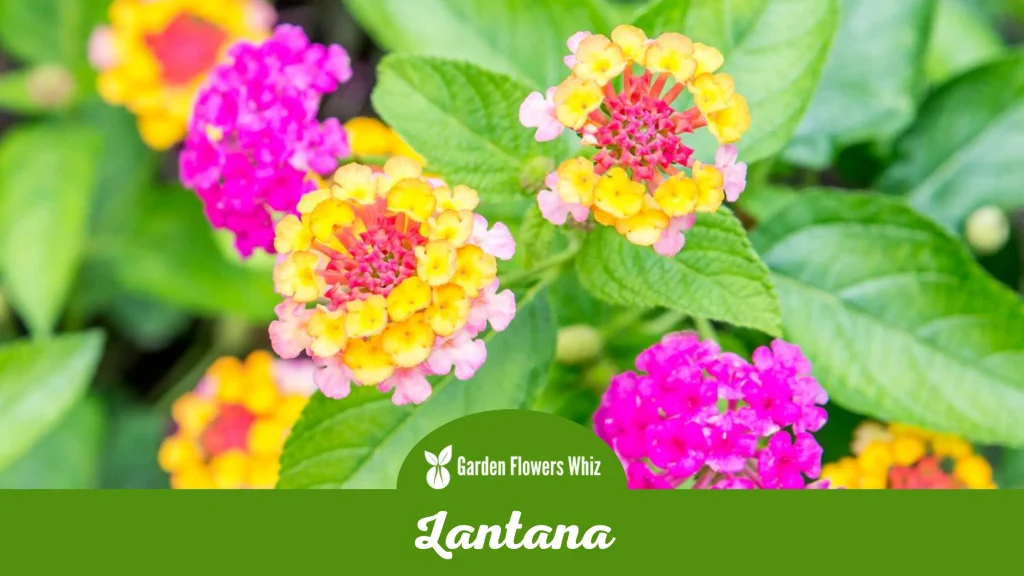
The Verbenaceae family of flowering plants includes the genus Lantana. Native to the Americas and Africa’s tropics and subtropics, lantana is distinguished by its tiny, vividly colored blossoms in red, orange, yellow, and pink hues.
Gardeners and landscapers love lantana plants for their colorful, long-lasting blossoms. They are frequently utilized as ground cover, hedges, and borders and are known to draw pollinators like butterflies.
Lantana is prized for its capacity to flourish under a variety of circumstances, including hot and arid environments. It is a drought-tolerant low-care plant and is a preferred option for gardeners in warmer climates because of its low maintenance requirements.
36. Lance-leaved Coreopsis
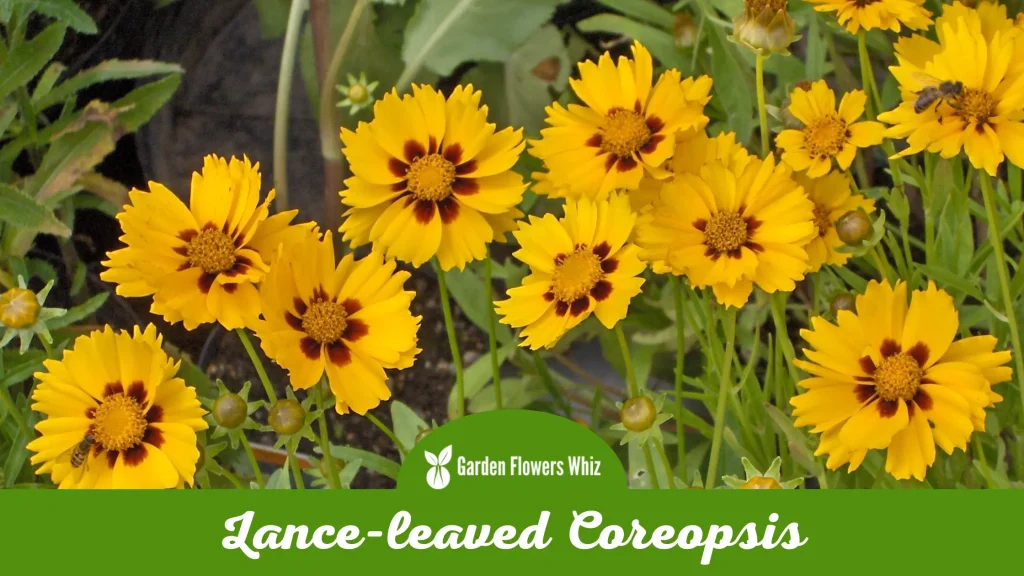
Lance-leaved The perennial plant Coreopsis, sometimes referred to as tickseed, is a member of the Asteraceae family. It is a native of the eastern United States, and during the summer, it blooms small, yellow flowers that are well-known for their beauty.
Due to its low maintenance requirements and cheery, vibrant blooms, Lance-leaved coreopsis is a favorite among gardeners.
It is a hardy plant that can survive in a variety of soil types is drought-tolerant and is well-liked for use as ground cover and in garden beds.
Lance-leaved Coreopsis is prized for its capacity to draw pollinators like bees and butterflies in addition to its decorative appeal.
These helpful insects, which support good plant growth and biodiversity, are drawn to the plant’s nectar-rich blossoms.
37. Lady’s Slipper
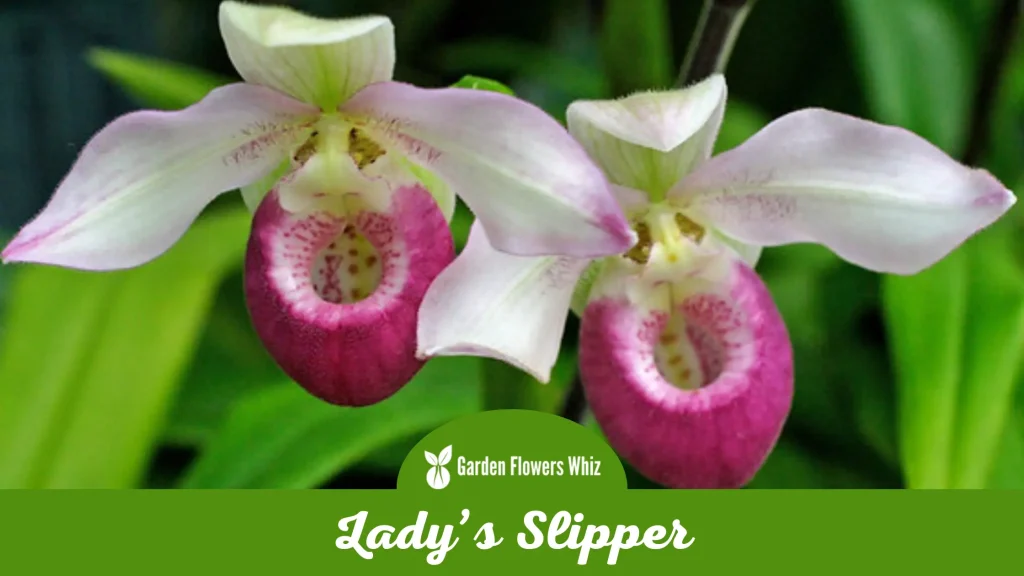
Cypripedium, another name for Lady’s Slipper, is a genus of flowering plants in the Orchidaceae family of plants. The Lady’s Slipper is a plant that grows naturally in temperate areas of the Northern Hemisphere. It is well-known for its distinctive and colorful flowers, which are available in pink, white, and yellow hues.
Gardeners and orchid enthusiasts favor Lady’s Slipper because of its gorgeous and unusual blossoms. It is a slow-growing plant that needs a particular set of growing circumstances, such as cool temperatures, high humidity, and soil that drains well.
Due to habitat degradation and overharvesting, Lady’s Slipper is still a threatened and endangered plant species in many areas.
Because of this, it’s crucial to get Lady’s Slipper from reliable nurseries and to refrain from gathering the plants in the wild.
38. Lady’s Mantle
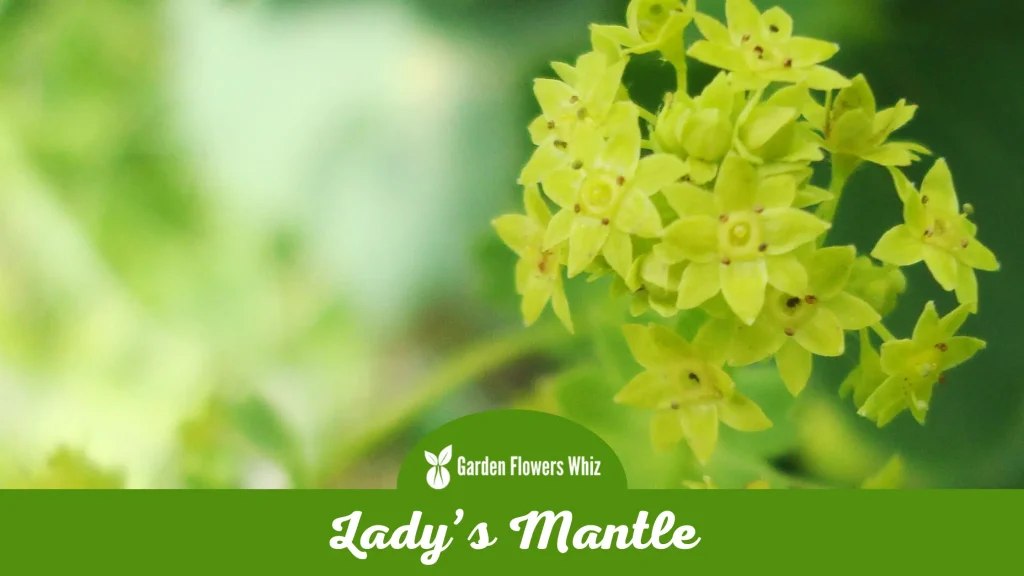
Alchemilla, another name for Lady’s Mantle, is a genus of flowering plants that is a member of the Rosaceae family of plants. Native to Europe and Asia, Lady’s Mantle is distinguished by its unique foliage and tiny, yellow-green flowers.
Gardeners favor Lady’s Mantle because of its lovely leaf, which has a distinctive texture and shape. The plant’s cup-shaped leaves are a favorite of photographers and garden enthusiasts because they can hold drops of water after it rains.
The potential of Lady’s Mantle to draw beneficial pollinators like bees and butterflies is also prized. These significant pollinators have a valuable food source and shelter in the plant’s nectar-rich flowers and wet leaves.
39. Lady Finger Cactus

Echinocactus grusonii, often known as the Lady Finger Cactus, is a species of cactus that is a member of the Cactaceae family. It is a native of Central Mexico, and because of its unusual beauty and low maintenance requirements, it is a favorite among gardeners and cacti fans.
The Lady Finger Cactus gets its name from the distinctive cylindrical shape of its spine-covered leaves, which can reach heights of three feet. Pollinators like bees and butterflies particularly enjoy the plant’s summer blooms of vivid yellow.
A resilient plant, the lady finger cactus may grow well under a range of environmental factors, including high temperatures, drought, and poor soil.
It is a common option for xeriscaping and is frequently utilized in desert gardens and arid settings. Due to its therapeutic qualities, it has been utilized in conventional medicine.
In Summary
Flowers that start with L come in a wide variety of hues, forms, and sizes, making them a lovely addition to any garden or floral design.
Every flower, from the lily’s vivid brightness to the lavender’s delicate petals, has a distinguishing feature that makes it stand out from the others. But in addition to their aesthetic worth, flowers that begin with the letter L can also have inherited metaphorical connotations.

Stacey Hernandez is a seasoned botanist with over 16 years of experience in the field. Her passion for plants and their intricate workings began at a young age, and she has since devoted her life to studying and understanding them.
Stacey’s expertise extends to a wide range of plant species, from delicate flowers to towering trees. As the founder of Garden Flowers Whiz, Stacey has created a platform for plant enthusiasts to seek guidance and advice.
Her website is a go-to resource for those seeking answers to their gardening dilemmas, whether it’s how to care for a particular plant or which species to choose for a specific climate.
